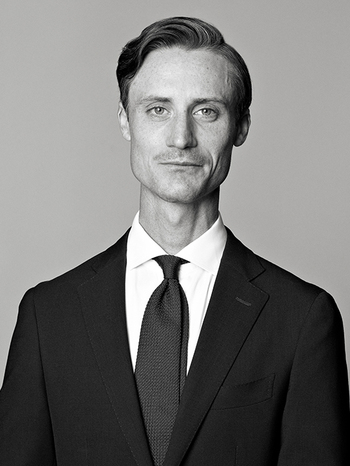Carl Wilhelmson
"Interiör, vinter, Löfsta" (Interior, winter, Löfsta)
Signed C. Wilhelmson. Executed in 1902. Canvas 56.5 x 43 cm.
Provenance
The artist's family.
Exhibitions
Liljevalchs konsthall, Stockholm, "Christian Eriksson-Carl Wilhelmson", January 15th-February 15th, 1995, cat. no. 168.
Literature
Listed in the artist's own catalogue, under year 1902, no 82.
Axel L. Romdahl, "Carl Wilhelmson", SAK, 1938, mentioned p. 96 and listed in the catalogue under year 1902, p. 213, no. 198.
More information
This evocative interior, as the title suggests, is created at the Löfsta (or Lövsta) estate in Uppland. Axel L. Romdahl writes in his 1938 biography:
"Carl Wilhelmson's father-in-law, Principal Kerfstedt, spent his summers on a farm outside Uppsala, which belonged to the Fjellstedt School. The estate, named Lövsta, with its charming, old-fashioned corps de logis, could provide a summer residence for his daughter, son-in-law, and grandchildren. For several years, Carl Wilhelmson stayed under its hospitable roof, especially in the spring and early summer."
The present composition, which, like "Berta, konstnärens hustru" (Berta, the artist's wife) is a very early example of Wilhelmson portraying his beloved wife, is, however, created during the winter. Earlier, Wilhelmson often used his mother and sister as models, but with his marriage to Berta in 1901 (whom he had met in Paris in 1896), the artist expanded the range of figures in his compositions. Romdahl, once again, writes:
"The young lady does not escape for a better price than her mother and sister. She is to be painted in full figure within an interior and on a large scale as well. A preliminary sketch from 1902 shows an interesting composition. The well-built young lady stands in an unaffected posture near the foreground. Closest to the viewer on the left, a white door frame draws its strict vertical, matched by a closed door on the far right. The stiffness is mirrored by a pair of 1850s chairs with curved backs and legs that seem to correspond. The light from a fire on the left falls behind the standing figure and on a seated lady, Mrs. Kerfstedt, in the background to the left of the painting. It illuminates her light apron, her head in a white lace cap, and shines on a painting on the wall behind the standing figure's head. The color is subtly rich."












































